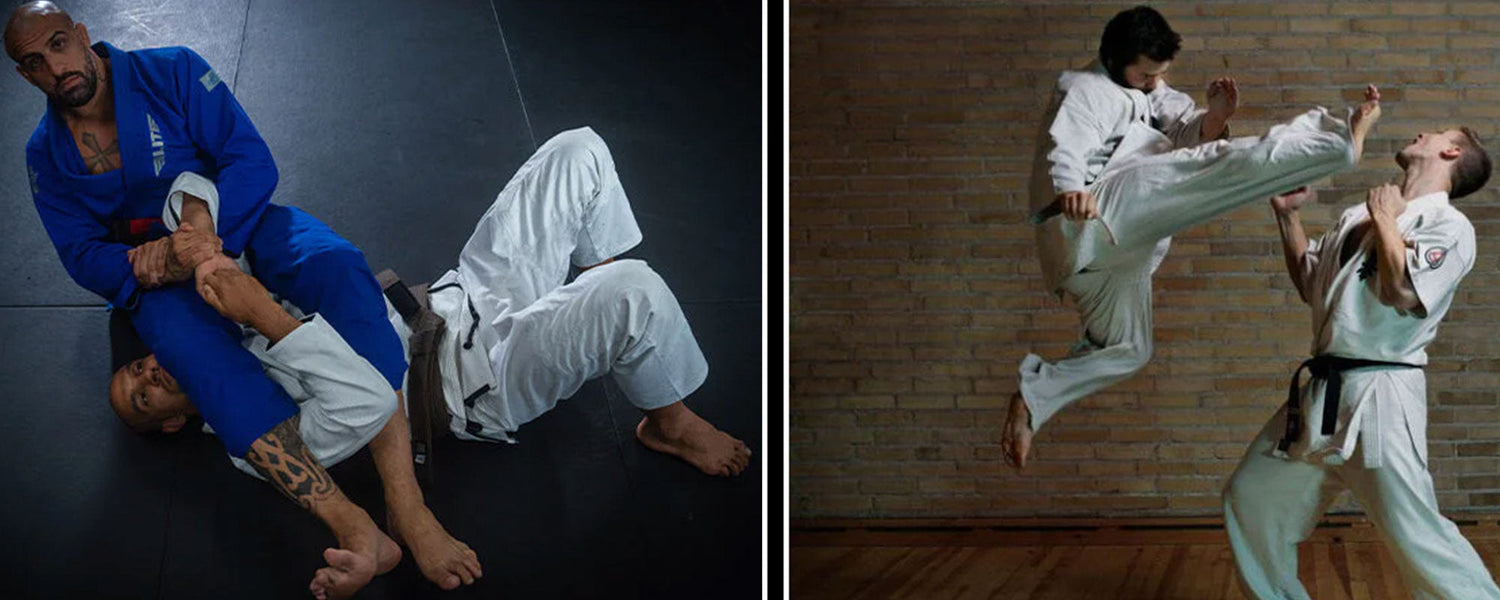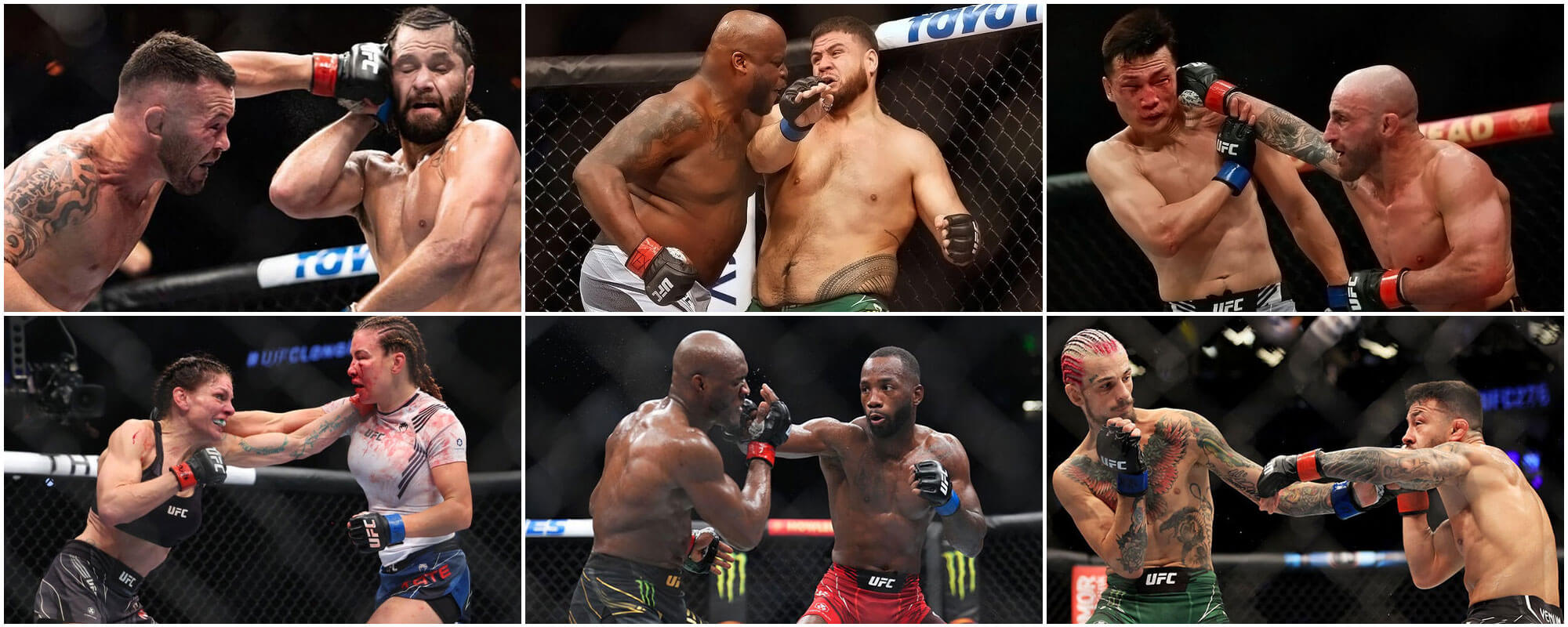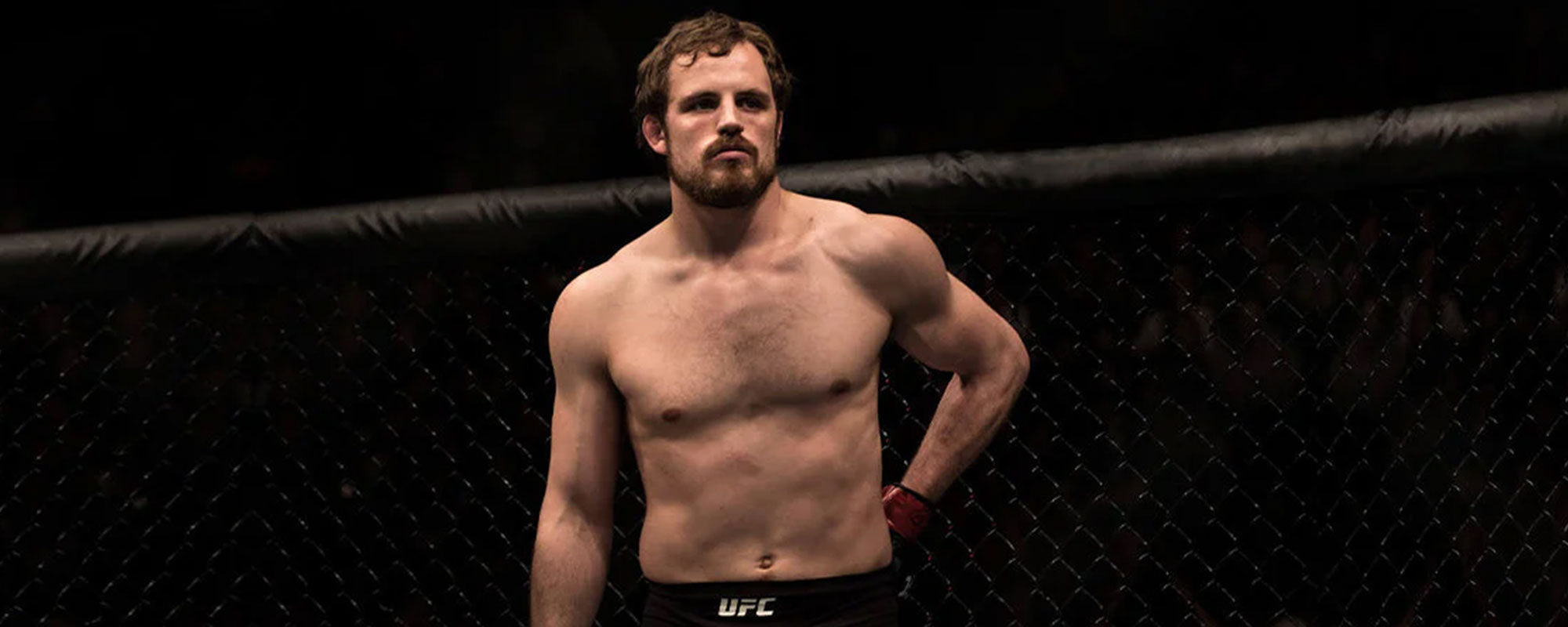Table of content
In the broader perspective of MMA, every martial art offers different kinds of skill sets and techniques. Each one has its legacy, champions, and effectiveness proven under specific conditions. At its core, MMA is a combination of three or four disciplines. They could be BJJ kickboxing, wrestling; both freestyle, and grego. Judo is used for the take-down component of the fight and jiu-jitsu is typically used for the ground grappling component.
So under the diverse canopy of MMA, we will discuss the definite arena of jiu-jitsu. You can train the muscle for striking or train the muscle for jiu-jitsu which teaches close-range grappling techniques or you can train for both simultaneously. But today we are going to find out the best way to incorporate both into your training routine. The reason for this important discussion or comparison is very compelling. There was a time when striking was a part of Gracie Jiu-Jitsu training. But in the modern world of Jiu-Jitsu, striking is prohibited.
1. What is the Difference Between BJJ and Striking?
Brazilian Jiu-Jitsu is an artistically curated set of scientific techniques, moves, and positions. A Brazilian Jiu-Jitsu practitioner is always focused on grappling, joint locks, submission attempts, strangling opportunities, and always looking for close-range combat. Because he is trained to take advantage of the situation. A BJJ fighter is confident in his grappling and choking techniques and well versed in the fluid motion of guard passing. BJJ fighting techniques involve long contact with the opponent in the form of escaping, grappling, and choking attempts.

Whereas, when it comes to striking, the contact is very brief and the purpose is to make a powerful impact with as brief contact as possible. When you try to punch a person the impact is very short yet powerful. On the contrary, when a jiu-jitsu player tries to grab the wrist of the opponent for an Armbar, it involves long contact focused on joint locks and grappling techniques. So, if you want to be skilled in both approaches, it is very crucial to split training time between BJJ and the striking art of your choice.

2. Maintain a Balance Between BJJ and Striking Art
If you want to compete in MMA or any other national or international competition, you are going to need as many techniques as possible. The rule of thumb is, the more you are proficient in more than one martial art, the easier it is to predict and counter the attacks of the opponent.
It is highly possible that your opponent is well versed in two or more martial arts and you need to get ready to defend yourself. Brazilian jiu-jitsu is focused on grappling techniques and your opponent may be skillful in Judo, Kickboxing, or any other martial art. Especially in MMA, most of the fighters are skilled in more than two or three martial arts.
Joe Rogan in his podcast about jiu-jitsu highlighted a very interesting element from the fight of Tony Ferguson vs Anthony Pettis, in which Tony Ferguson used a Wing Chun technique by strangling the hands of Anthony and striking with the elbow. So it is not only important but essential to be proficient in more than one martial art if you want to compete in MMA competitions.
You need to be well versed in both Jiu Jitsu and any other striking martial art. First of all, you need to maintain consistency in training. After that, you can try different schedules and timings and choose whatever plan suits you the most. At the start, you cannot train for both in one session. It could be a nerve-racking session for you. You can start by training for BJJ and striking on alternative days.
3. History of Striking in the Old BJJ Practices
In the beginning, striking was an essential element of Carlos Gracie’s BJJ training. It was an essential skill for a BJJ fighter to know how to punch just like knowing how to choke an opponent. It was similar to the traditional Japanese jiu-jitsu that is still practiced around the globe. Helio and Carlos Gracie acknowledged the importance of striking in a natural fighting style that is full of uncertainties. But his ultimate goal was to take the opponent to the ground and engage him in a close-range grappling style fight and strangle him into submission.

4. Train for Improvements with Mastery
In grappling and sparring most fighters prefer to practice the techniques they are already good at to achieve mastery and train their muscle memory. The more effective approach is to focus on overcoming your weaknesses first and then going for proficiency. You can’t guess the game of your opponent, be prepared to face anything.
If you are training for more than one martial art simultaneously, you must maintain a few things.
- Focus more on your weak techniques. This simple yet effective rule is beneficial for both jiu-jitsu (grappling) and striking.
- By focusing on your strengths you can also achieve overall improvements. But you need to create a balance especially when you are training for more than one martial art.
4.1. Know Your Limits
- If you plan to learn BJJ with any other striking martial art there is a higher chance that you can overburden yourself. You might be incorporating one hour of jiu-jitsu and one hour of striking. This is not a good routine because your body might be over-exhausted.
- The goal must be getting improvement in both skills and for achieving that you need to opt for a balanced routine.

5. Test Your Schedule With Different Routines
- You need to understand that grappling and striking are two of the most prominent martial arts. You can’t incorporate them into one session, at least not in the beginning. Here are some suggestions if you are going to train for both.
- You can try different schedules to find out what works for your body. You can engage in BJJ training in the morning and practice striking in the afternoon or evening or vice versa. This routine will surely help you to find out what works for you according to your energy level and body comfort.
- You should train with different people. If you always train with BJJ fighters, how are you supposed to develop striking skills? The best way is to train with those who are proficient in both techniques and ready to roll and spar with you.
6. Why are Jiu-Jitsu and Muay Thai Considered The Best Combination?
6.1. A Lethal Combination of Grappling and Striking
BJJ will make you semi-god on how to take your opponent to the ground and control his joints and inculcate a reflexive set of skills to anticipate the movements of your opponent. While teaching you how to encounter the techniques of the opponent at the same time. BJJ is the name for fluid and swift transition from one position to another looking for an advantageous position while involuntarily looking to escape from a bad position.
6.2. The Combination of BJJ and Muay Thai is Effective and Lethal
On the contrary, Muay Thai will teach you how to win a standing fight with strikes, and punches. BJJ is considered the king of grappling sports and Muay Thai is the Queen of stand-up striking fights. The combination of ground and standing fight will enable your eight limbs to get into the action and perform with synchronous symmetry. So, they don't mix with each other in techniques and approaches. If you want to learn these two martial arts, you need to split your training time between grappling and any other striking martial art.
7. Carefully Identify Your Priorities
In most cases, fighters want to be good at more than one martial art but are not ready to give equal time, energy, effort, and dedication. In most cases, fighters are well trained in one martial art but want to diversify their skill set. It is a sensible approach, there is no question about it. You need to clarify your priorities first, you don't want to end up a novice in both categories. After thorough contemplation, try to create a balance. You are going to learn how to throw punches, throws, and kicks as well as how to choke a bigger opponent.
If you want to be a great fighter and you train three times a week, it will take almost two decades to become an elite fighter. But if you want to be good at more than one martial art you need to allocate a substantial amount of consistent time, effort, and energy to the training sessions. So, before making any decision or involving in more than one martial art, incorporate these factors to create a realistic goal.
8. What is the Right Approach to Excel in MMA?
This is the crucial question and the reason behind the increased number of jiu-jitsu champions joining MMA is the opportunity to showcase elite skills, attract star-studded popularity, and financial benefits. MMA has incorporated almost all the mainstream martial arts. MMA fighters are well versed in Wrestling, Judo Muay Thai, and other martial arts. When it comes to jiu-jitsu, during the last decade many BJJ champions have excelled in MMA. Because a jiu-jitsu Black belt is equipped with almost all the lethal weapons to immobilize the opponent and force him into submission in close-range combat and their take-down game is stronger than the strikers. There is an increased number of BJJ techniques that fighters apply in MMA bouts to seize the day.
There are dozens of occasions when MMA fighters use the jiu-jitsu armbar, rear neck choke, and guillotine choke to get a submission from the opponent. The right approach to excel in MMA is to be proficient in more than one martial art. Many fighters combine the Japanese, Chinese, Korean and Brazilian martial arts and put on a lethal show for the opponent. You just have to identify which two or three martial arts you are going to master. If you are a beginner, start by getting basic training in BJJ and then allocate days and hours to different martial arts.
9. If You Want to Choose MMA as a Career
If your life goal is to make it to MMA then you need to practice striking and grappling simultaneously and get to the point where you are good at both techniques and approaches. To compete in MMA you need to be well prepared to defend and counter any martial art technique including grappling and striking. It depends on your game, some fighters like to end the fight by punching the opponent, others like to take the fight to the ground, and here comes grappling. Carlos Gracie Sr once said;
“Punch a black belt in the face, he becomes a brown belt. Punch him again, purple..”.
Most of the time if one fighter is proficient in jiu-jitsu, he might go for the joints and strangle the opponent by armbar, rear naked choke and get the submission. Furthermore, if you are competing in MMA your opponent will be constantly moving and trying to remain out of your reach. Roger Gracie is a legendary fifth-degree BJJ Black Belt. He said:
“80% of BJJ is worthless in MMA”.
If you only train for jiu-jitsu, your striking techniques might not be good enough to help you win because jiu-jitsu is not focussed on striking. But its techniques will help you win an MMA fight along with other striking techniques because most of the fighters are familiar with the advanced jiu-jitsu moves.
10. Conclusion
Most people are practically not ready to put in the required effort and time to learn more than one martial art. It all comes down to your priorities and the effort you are ready to put in. If you want to be a well-rounded fighter and not just good at one thing, you need to clear your surplus activities and make a schedule in which an equal number of hours are allocated to both of your desired martial arts. There is no shortcut to becoming an MMA fighter. Mike Tyson once said;
“Everybody thinks this is a tough man’s sport. This is not a tough man’s sport. This is a thinking man’s sport. A tough man is gonna get hurt real bad in this sport”.
Photo Credit: @liveabout












Leave a comment
This site is protected by hCaptcha and the hCaptcha Privacy Policy and Terms of Service apply.